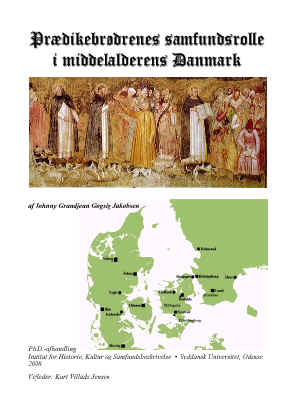
Centre for Dominican Studies of Dacia
The role of Friars Preachers in medieval Danish society
by Johnny Grandjean Gøgsig Jakobsen (2008)
Extended summary in English of PhD-dissertation by Johnny Grandjean Gøgsig Jakobsen, submitted to the University of Southern Denmark on 31 January 2008 and defended on 12 June the same year. An edited version of this summary is published in ‘Dominican History Newsletter’ vol. 16 (2007).
Link to full dissertation (in Danish).

The aim of my
PhD-dissertation is a rather ambitious one: to analyse and identify ‘The
role of Friars Preachers in medieval Danish society’ [original title: Prædikebrødrenes
samfundsrolle i middelalderens Danmark]. The Order of Friars Preachers
arrived in Denmark in the early 1220s and remained here for the next 300 years
until the friars were forced to leave in the 1530s due to the Lutheran
Reformation. By that time, 15 Dominican convents existed in Denmark as part of
the Nordic-Dominican province of Dacia with a total of 31 convents. Potentially,
this ought to have made the Friars Preachers quite a significant part of
ecclesiastical life and, thus, an important factor in overall society in High
and Late medieval Denmark. Whereas this topic of the friars’ role in everyday
life has gained increasing interest in studies from other parts of Northern and
Western Europe in the last 30 years, it has been left rather untouched in
Scandinavia and Denmark. Therefore, my dissertation wish to look at the
Dominican convents and priories in medieval Denmark as an integrated part of
society, by describing some of the various ways in which a convent interfaced
with the surrounding society. My method has been to make a complete(-as-possible)
registration of all written evidences from the Middle Ages and the following
century even remotely mentioning Dominican friars or their priories in Denmark.
Based on this material, I have taken up a number of themes and questions
concerning the societal role of the Friars Preachers, which I have analysed
partly through the preserved material from Denmark, partly by comparing the
Danish material with the above-mentioned studies from abroad. The themes chosen
for analysis are: preaching, terminationes, public use of priories,
relations to the secular church, relations to different social groups,
geographical location of priories, possession of property, and participation in
the Inquisition. Each theme is given a chapter of its own, starting by
identifying the related traditional views and discussions, and as it turns out,
practically none of the (at least in Denmark) commonly met traditions about the
Dominicans is left completely ‘untouched’; most of them need a significant
light and shade, while others can be completely dismissed.
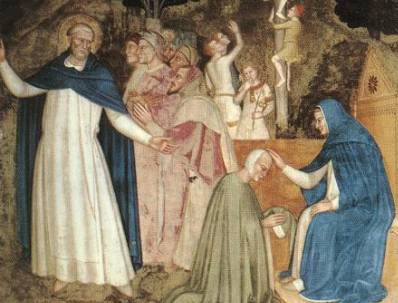 Preaching was of course the
central element for the Order of Preachers. In the first thematic chapter of the
thesis, I have, therefore, tried to describe Dominican preaching in both
practice and content: where and how did the friars preach - and
about what and why? I have started by explaining the high- and
late medieval need for qualified preachers, perhaps not least in Northern Europe,
where preaching - even after the Forth Lateran Council - seems to have played a
rather secondary role in the pastoral services of most bishops, canons and
parish priests. Besides a shortage in both quantity and quality of secular
preachers, I have suggested that the secular priests seem to have concentrated
their efforts on administering the Sacraments. Actually, it could even appear as
if many bishops made use of Dominican preachers to comply with Canon 10 of the
Lateran Council about promoting more preaching in their dioceses. Especially in
the second quarter of the thirteenth century, the bishops seem to be the primary
initiators of numerous Dominican convent foundations in Denmark as in the rest
of Northern Europe. In Denmark, it is difficult to find any specific mentioning
of Dominican preaching at all, but we do have a letter from 1489 describing how
the parishioners of two parishes in a rather remote part of northern Jutland
explicitly had invited mendicant preachers to preach in their churches, and the
bishop of Odense allowed Franciscan and Dominican preachers to perform services
in the cathedral in 1316. Also, we have several incidents of Dominican sermon
collections changing hands within the secular clergy of Lund, Roskilde and Ribe
(e.g. the Summa Guiotina by Guy d’Évreux and the De tempore et de
sanctis by Jacques de Lausanne). In addition, we actually have an example of
preaching stationes (otherwise known in e.g. Flemish cities), as the
three mendicant convents of Helsingør in 1446 had agreed to divide the
preaching days at Christmas, Easter and Pentecost equally among them. In
Scandinavia, we furthermore have an extant outdoor preaching pulpit on the walls
of the Dominican church in Sigtuna, indicating preaching for an outdoor audience
at the churchyard. Compared to the general scarcity of Dominican sources in
Dacia, we are actually not all that bad off in concern of preaching material.
Apart from the imported sermon collections, the Danish friar Mathias Ripensis is
the author of a preserved sermones de tempore from around 1300. A handful
of other lost sermon collections of Danish origin is known indirectly from
various registers. In addition to this, it is worth mentioning the Norwegian
Dominican Jon Haldórsson, who became bishop in Skálholt on Iceland
(1323-1339), where a number of exempla used in his preaching are
preserved in the Icelandic literary tradition. Finally, a small Dominican bible
from the late thirteenth century, which has belonged to Fr. Canutus, prior
provincial of Dacia in the early fourteenth century, is preserved, and in the
bible is a number of personal additions, possibly made by Fr. Canutus himself,
showing how the bible was used in practice by the preacher ‘on location’. As
a special niche within Dominican preaching, I have pointed to the friars’
involvement with preaching the crusades, which especially in the regions around
the Baltic Sea appears to be a rather important Dominican activity in the
thirteenth century - not just important for the promotion of the crusades (to
Prussia, Livonia, Estonia and Finland, as well as to The Holy Land), but
possibly also important for the foundation of several convents in Sweden,
Northern Germany and Poland.
Preaching was of course the
central element for the Order of Preachers. In the first thematic chapter of the
thesis, I have, therefore, tried to describe Dominican preaching in both
practice and content: where and how did the friars preach - and
about what and why? I have started by explaining the high- and
late medieval need for qualified preachers, perhaps not least in Northern Europe,
where preaching - even after the Forth Lateran Council - seems to have played a
rather secondary role in the pastoral services of most bishops, canons and
parish priests. Besides a shortage in both quantity and quality of secular
preachers, I have suggested that the secular priests seem to have concentrated
their efforts on administering the Sacraments. Actually, it could even appear as
if many bishops made use of Dominican preachers to comply with Canon 10 of the
Lateran Council about promoting more preaching in their dioceses. Especially in
the second quarter of the thirteenth century, the bishops seem to be the primary
initiators of numerous Dominican convent foundations in Denmark as in the rest
of Northern Europe. In Denmark, it is difficult to find any specific mentioning
of Dominican preaching at all, but we do have a letter from 1489 describing how
the parishioners of two parishes in a rather remote part of northern Jutland
explicitly had invited mendicant preachers to preach in their churches, and the
bishop of Odense allowed Franciscan and Dominican preachers to perform services
in the cathedral in 1316. Also, we have several incidents of Dominican sermon
collections changing hands within the secular clergy of Lund, Roskilde and Ribe
(e.g. the Summa Guiotina by Guy d’Évreux and the De tempore et de
sanctis by Jacques de Lausanne). In addition, we actually have an example of
preaching stationes (otherwise known in e.g. Flemish cities), as the
three mendicant convents of Helsingør in 1446 had agreed to divide the
preaching days at Christmas, Easter and Pentecost equally among them. In
Scandinavia, we furthermore have an extant outdoor preaching pulpit on the walls
of the Dominican church in Sigtuna, indicating preaching for an outdoor audience
at the churchyard. Compared to the general scarcity of Dominican sources in
Dacia, we are actually not all that bad off in concern of preaching material.
Apart from the imported sermon collections, the Danish friar Mathias Ripensis is
the author of a preserved sermones de tempore from around 1300. A handful
of other lost sermon collections of Danish origin is known indirectly from
various registers. In addition to this, it is worth mentioning the Norwegian
Dominican Jon Haldórsson, who became bishop in Skálholt on Iceland
(1323-1339), where a number of exempla used in his preaching are
preserved in the Icelandic literary tradition. Finally, a small Dominican bible
from the late thirteenth century, which has belonged to Fr. Canutus, prior
provincial of Dacia in the early fourteenth century, is preserved, and in the
bible is a number of personal additions, possibly made by Fr. Canutus himself,
showing how the bible was used in practice by the preacher ‘on location’. As
a special niche within Dominican preaching, I have pointed to the friars’
involvement with preaching the crusades, which especially in the regions around
the Baltic Sea appears to be a rather important Dominican activity in the
thirteenth century - not just important for the promotion of the crusades (to
Prussia, Livonia, Estonia and Finland, as well as to The Holy Land), but
possibly also important for the foundation of several convents in Sweden,
Northern Germany and Poland.
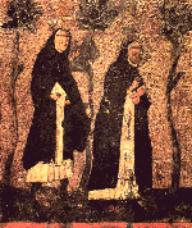 Traditionally,
mendicant studies have focused on the friars’ urban activities, first and
foremost in the hometown of the convents. A number of NW-European studies within
the last 25-30 years have, however, pointed to quite a significant importance
for the rural activities of the friars, both economically and pastoral. Even in
highly urbanized regions such as Flanders, Alsace, the Rhineland and along the
north German coast, the termini and the terminationes of the
Dominican convents seem to have played an important role, and in Scandinavia,
where even the largest cities were no match for the Flemish and German ones,
Dominican terminationes must be
expected to have been even more important. From Denmark, we are very far from
having as much knowledge on Dominican termini and terminationes as
in Brittany, Flanders or Germany, but we do have some interesting indications of
the phenomenon. Firstly, a couple of papal bulls from the thirteenth century
specifically addressed to the friars in Dacia grant them certain privileges in
regard of residence and eating during travelling, which strongly point to terminatione.
As mentioned earlier, Dominican preachers are known to have given services in
the northernmost parts of Jutland in the 1480s, from where there were about 200
kilometres to the closest Dominican convents (in Viborg and Århus). Furthermore,
a number of Danish incidents, where Dominican friars are reported outside their
hometowns, could point to terminationes,
although this is not actually said. In Scandinavia, returning and well-described
Dominican terminationes-conflicts are known from Stockholm between three
local convents and on the Scanian herring markets between local Danish friars
and visiting German friars accompanying Hanseatic merchants. Another indication
of the importance of Dominican terminatione
in medieval Scandinavia can be found in the fact that the access to do the terminationes
was one of the most important restrictions against the mendicants by the time of
the Reformation, and when the Swedish King Gustav Vasa in 1527 limited mendicant
terminationes to 2 x 5 weeks a year,
this was apparently the final deathblow to the mendicant orders in Sweden, where
the convents basically all died out in the following year. Whereas Dominican terminationes
obviously existed in medieval Denmark, only two certain evidences can be
produced for a Danish domus terminarie (Slagelse and Malmö, the latter
with a chapel). Certainly, the poor source situation may explain the limited
evidence of Dominican domus terminarii in Denmark, but I would dare to
suggest an at least supplementary reason, namely that the Dominican fratres
terminarii in medieval Denmark to a very large part were offered
accommodation by rural parish priests and the rural nobility - and perhaps also
by Franciscan convents.
Traditionally,
mendicant studies have focused on the friars’ urban activities, first and
foremost in the hometown of the convents. A number of NW-European studies within
the last 25-30 years have, however, pointed to quite a significant importance
for the rural activities of the friars, both economically and pastoral. Even in
highly urbanized regions such as Flanders, Alsace, the Rhineland and along the
north German coast, the termini and the terminationes of the
Dominican convents seem to have played an important role, and in Scandinavia,
where even the largest cities were no match for the Flemish and German ones,
Dominican terminationes must be
expected to have been even more important. From Denmark, we are very far from
having as much knowledge on Dominican termini and terminationes as
in Brittany, Flanders or Germany, but we do have some interesting indications of
the phenomenon. Firstly, a couple of papal bulls from the thirteenth century
specifically addressed to the friars in Dacia grant them certain privileges in
regard of residence and eating during travelling, which strongly point to terminatione.
As mentioned earlier, Dominican preachers are known to have given services in
the northernmost parts of Jutland in the 1480s, from where there were about 200
kilometres to the closest Dominican convents (in Viborg and Århus). Furthermore,
a number of Danish incidents, where Dominican friars are reported outside their
hometowns, could point to terminationes,
although this is not actually said. In Scandinavia, returning and well-described
Dominican terminationes-conflicts are known from Stockholm between three
local convents and on the Scanian herring markets between local Danish friars
and visiting German friars accompanying Hanseatic merchants. Another indication
of the importance of Dominican terminatione
in medieval Scandinavia can be found in the fact that the access to do the terminationes
was one of the most important restrictions against the mendicants by the time of
the Reformation, and when the Swedish King Gustav Vasa in 1527 limited mendicant
terminationes to 2 x 5 weeks a year,
this was apparently the final deathblow to the mendicant orders in Sweden, where
the convents basically all died out in the following year. Whereas Dominican terminationes
obviously existed in medieval Denmark, only two certain evidences can be
produced for a Danish domus terminarie (Slagelse and Malmö, the latter
with a chapel). Certainly, the poor source situation may explain the limited
evidence of Dominican domus terminarii in Denmark, but I would dare to
suggest an at least supplementary reason, namely that the Dominican fratres
terminarii in medieval Denmark to a very large part were offered
accommodation by rural parish priests and the rural nobility - and perhaps also
by Franciscan convents.
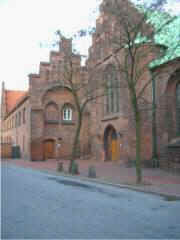 In chapter 6, I
return to what could be called the centre of Dominican life: the priory church,
with special focus on the churches being “open to the rest of society” and,
thus, the external use of the churches, first and foremost public attendance to
masses and canonical hours (especially the vesper and the completorium
with its Salve Regina-procession), the foundation of eternal masses,
and external burials - all of it visualised by Danish examples. In a later
chapter (10), I continue to look at the external use of the remaining priory
buildings, which in some towns functioned as apparently rather integrated parts
of society. First and foremost, this can be seen for the halls of the priories,
such as the chapter hall and the refectory hall, which on several occasions were
used for various types of public assemblies of different character. The list of
such ‘external usages’ of Dominican priories in Denmark is quite long. The
character and dimensions of the assemblies could vary from simple meetings
between to parties, usually a negotiated agreement about the ownership of some
land, to larger assemblies of political or jurisdictional character, going from
local to regional, national or even international level. Especially the Danish
kings Christian I (1448-1481) and Hans (1481-1513) systematically used
Franciscan and Dominican priories as residence for their travelling royal court.
The preference for mendicant priories for such purposes partly seem to be based
on the fact that the priory hall often constituted the largest and most
prominent meeting place in many Danish towns, but to judge from the Scandinavian
material, another important reason was that the priory held some sort of neutral
status in regard of the matter of the meeting. When, for instance, the
Dominicans themselves were part of a dispute to be handled by the King’s Court,
then the meeting was always allocated to other, neutral surroundings.
In chapter 6, I
return to what could be called the centre of Dominican life: the priory church,
with special focus on the churches being “open to the rest of society” and,
thus, the external use of the churches, first and foremost public attendance to
masses and canonical hours (especially the vesper and the completorium
with its Salve Regina-procession), the foundation of eternal masses,
and external burials - all of it visualised by Danish examples. In a later
chapter (10), I continue to look at the external use of the remaining priory
buildings, which in some towns functioned as apparently rather integrated parts
of society. First and foremost, this can be seen for the halls of the priories,
such as the chapter hall and the refectory hall, which on several occasions were
used for various types of public assemblies of different character. The list of
such ‘external usages’ of Dominican priories in Denmark is quite long. The
character and dimensions of the assemblies could vary from simple meetings
between to parties, usually a negotiated agreement about the ownership of some
land, to larger assemblies of political or jurisdictional character, going from
local to regional, national or even international level. Especially the Danish
kings Christian I (1448-1481) and Hans (1481-1513) systematically used
Franciscan and Dominican priories as residence for their travelling royal court.
The preference for mendicant priories for such purposes partly seem to be based
on the fact that the priory hall often constituted the largest and most
prominent meeting place in many Danish towns, but to judge from the Scandinavian
material, another important reason was that the priory held some sort of neutral
status in regard of the matter of the meeting. When, for instance, the
Dominicans themselves were part of a dispute to be handled by the King’s Court,
then the meeting was always allocated to other, neutral surroundings.
Mendicant convent
foundations also seem to have held a great importance for the towns in general.
During the thirteenth century, mendicant priories became such a common and
characteristic feature in urban Europe that town magistrates in places, which
still not had a convent, showed a distinct interest in inviting the friars, and
hereby aiming to increase and secure the urban status and privileges of their
town. In Denmark, such a relation can be suggested for three smaller towns
(Halmstad, Holbæk and Vejle), which in the period 1250-1340 all received urban
privileges and Dominican convents within a narrow span of years.
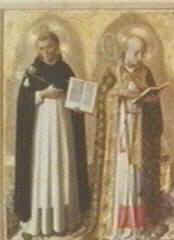 To judge from a lot
of post-medieval literature the relation between the mendicant orders and the
secular church (i.e. parish priests, canons and bishops) was extremely
unfriendly. They are usually described as to rivalling organizations competing
for the same market, and one chapter is therefore dedicated to the potential and
actual conflicts between secular clerics and Dominicans in Scandinavia and
Denmark - where in fact the best known cases of such strives are Norwegian,
while we from Denmark just have a rather simple case concerning a dispute over a
small street in Lund giving access to a parish church located next door to the
Dominican priory. In fact, I end up questioning this scholarly tradition rather
seriously, since I can find far more indications and solid evidence of very good
Dominican-secular relations in the Danish material than I can of the opposite.
The evidence and indications take many forms and levels. It is obvious that the
first series of Dominican convent foundations in Scandinavia had a special
preference for episcopal cities and other major ecclesiastical centres. I have
suggested that an important objective of these foundations, in the eyes of the
bishops, was to honour a decision of the Fourth Lateran Council about improving
the educational standards for the diocese clergy in the cathedral schools –
perhaps not so much by letting friars act as teachers in the schools, but by
preparing the canons to perform the task. It is difficult to say to what degree
this possible aim actually was achieved, since the educational standards of the
cathedral schools in Scandinavia appears to have remained quite poor, but it is
worth noting that no other group within Danish medieval society seems to have
been so closely related to the Friars Preachers as the canons secular at the
cathedral chapters, especially in Lund and Ribe, in periods also very much in
Roskilde. Whereas we have no specific evidence showing that the parish clergy
benefited from Dominican teaching in the cathedral schools, apart from
indirectly through the above-mentioned Dominican writings, another possibility
could be that the clerics attended ‘open classes’ in the priory schools (which,
however, cannot be identified in Scandinavia) or benefited from ‘on
site-education’ out in the parishes; not only could the parish priests learn
from listening to the sermons of the friars, but since it would appear as if the
vicarages were perhaps the most important overnight residence for the
terminaring friars, this certainly would bring about the settings for a good,
educational talk between the priest and the visiting friar in the evenings.
To judge from a lot
of post-medieval literature the relation between the mendicant orders and the
secular church (i.e. parish priests, canons and bishops) was extremely
unfriendly. They are usually described as to rivalling organizations competing
for the same market, and one chapter is therefore dedicated to the potential and
actual conflicts between secular clerics and Dominicans in Scandinavia and
Denmark - where in fact the best known cases of such strives are Norwegian,
while we from Denmark just have a rather simple case concerning a dispute over a
small street in Lund giving access to a parish church located next door to the
Dominican priory. In fact, I end up questioning this scholarly tradition rather
seriously, since I can find far more indications and solid evidence of very good
Dominican-secular relations in the Danish material than I can of the opposite.
The evidence and indications take many forms and levels. It is obvious that the
first series of Dominican convent foundations in Scandinavia had a special
preference for episcopal cities and other major ecclesiastical centres. I have
suggested that an important objective of these foundations, in the eyes of the
bishops, was to honour a decision of the Fourth Lateran Council about improving
the educational standards for the diocese clergy in the cathedral schools –
perhaps not so much by letting friars act as teachers in the schools, but by
preparing the canons to perform the task. It is difficult to say to what degree
this possible aim actually was achieved, since the educational standards of the
cathedral schools in Scandinavia appears to have remained quite poor, but it is
worth noting that no other group within Danish medieval society seems to have
been so closely related to the Friars Preachers as the canons secular at the
cathedral chapters, especially in Lund and Ribe, in periods also very much in
Roskilde. Whereas we have no specific evidence showing that the parish clergy
benefited from Dominican teaching in the cathedral schools, apart from
indirectly through the above-mentioned Dominican writings, another possibility
could be that the clerics attended ‘open classes’ in the priory schools (which,
however, cannot be identified in Scandinavia) or benefited from ‘on
site-education’ out in the parishes; not only could the parish priests learn
from listening to the sermons of the friars, but since it would appear as if the
vicarages were perhaps the most important overnight residence for the
terminaring friars, this certainly would bring about the settings for a good,
educational talk between the priest and the visiting friar in the evenings.
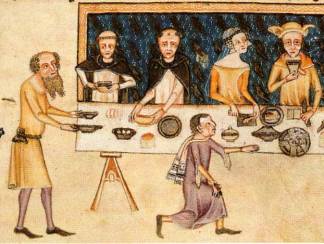 One chapter of my
thesis is especially dedicated to relations between the Dominicans and various
groups in medieval Danish society. The easiest way to measure social relations
to the surrounding society is to analyse the recorded donations to the convents,
or rather, the social origin of the donors. Of course, such an analysis holds
several problems, especially the one that knowledge of big donations from
high-ranking members of society are more likely to be preserved than more
trivial ones, just as daily alms and small donations probably were not
documented even to begin with. Still, we have to work with what we got. And for
the Dominican convents in medieval Denmark, I have recorded a total of 190
donations of various types. The two major overall groups of registered donors to
Danish Dominicans are the nobility (42%) and clergy (32%), especially the
knighthood (16%), lower nobility (18%) and the canons of the cathedral chapters
(22%). The royal and bourgeois donations are more moderate (6% and 13%
respectively). It should be noted that this analysis only takes into account the
number of donations, not their individual size. Among the most remarkable
changes in the ‘social donor mix’ over time is a significant decline in the
role of the clergy from being the most prominent donor group (43-44%) in the
thirteenth and fourteenth centuries to a much more modest role (16%) in the
sixteenth century. Also, we can note a steady increase in the role of the lower
nobility (from 8% in the thirteenth century to 24% in the sixteenth century),
whereas bourgeois engagement mainly can be noted in the fifteenth century: 0%
(13th), 13% (14th), 21% (15th), 8% (16th).
In contrast to other regions of Northern Europe, the various guilds of late
medieval Denmark can hardly be ascribed any major importance for the Dominican
convents - or vice versa. Closely related to the question of donors is
the question of from which groups in society the mendicant orders recruited
their friars. In regard of identifying social backgrounds of Dominican friars,
the Danish material is too limited to say anything on its own, but when compared
with the foreign figures and the analysis of the Danish donors (whom, it can be
argued, are likely to have some social similarity with the potential ranks of
recruitment), it is perhaps interesting to note some clear similarities. The
(not so) grand total of socially identifiable Danish Dominicans is eight: one
former bishop, two former canons, one parish priest, and four lay people of
lower nobility (one being the nephew of a known canon).
One chapter of my
thesis is especially dedicated to relations between the Dominicans and various
groups in medieval Danish society. The easiest way to measure social relations
to the surrounding society is to analyse the recorded donations to the convents,
or rather, the social origin of the donors. Of course, such an analysis holds
several problems, especially the one that knowledge of big donations from
high-ranking members of society are more likely to be preserved than more
trivial ones, just as daily alms and small donations probably were not
documented even to begin with. Still, we have to work with what we got. And for
the Dominican convents in medieval Denmark, I have recorded a total of 190
donations of various types. The two major overall groups of registered donors to
Danish Dominicans are the nobility (42%) and clergy (32%), especially the
knighthood (16%), lower nobility (18%) and the canons of the cathedral chapters
(22%). The royal and bourgeois donations are more moderate (6% and 13%
respectively). It should be noted that this analysis only takes into account the
number of donations, not their individual size. Among the most remarkable
changes in the ‘social donor mix’ over time is a significant decline in the
role of the clergy from being the most prominent donor group (43-44%) in the
thirteenth and fourteenth centuries to a much more modest role (16%) in the
sixteenth century. Also, we can note a steady increase in the role of the lower
nobility (from 8% in the thirteenth century to 24% in the sixteenth century),
whereas bourgeois engagement mainly can be noted in the fifteenth century: 0%
(13th), 13% (14th), 21% (15th), 8% (16th).
In contrast to other regions of Northern Europe, the various guilds of late
medieval Denmark can hardly be ascribed any major importance for the Dominican
convents - or vice versa. Closely related to the question of donors is
the question of from which groups in society the mendicant orders recruited
their friars. In regard of identifying social backgrounds of Dominican friars,
the Danish material is too limited to say anything on its own, but when compared
with the foreign figures and the analysis of the Danish donors (whom, it can be
argued, are likely to have some social similarity with the potential ranks of
recruitment), it is perhaps interesting to note some clear similarities. The
(not so) grand total of socially identifiable Danish Dominicans is eight: one
former bishop, two former canons, one parish priest, and four lay people of
lower nobility (one being the nephew of a known canon).
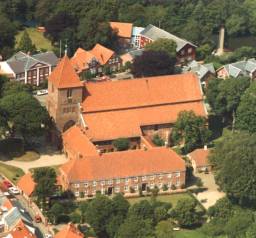 With an educational
background as half historian, half geographer, I have a natural interest in the
physical location of the Dominican priories within the medieval urban geography.
For one chapter, I have therefore used local-historical studies of others to
create a series of reconstructed city maps of all 16 ‘Dominican cities’ of
Denmark, (for the first time) presented in a standardised and therefore
easy-comparable form, pointing out various urban features considered important
for the analysis: the borders of the
late medieval urbanised area, location of known gates, streets and alleys,
castles, city halls, cathedrals, parish churches, episcopal and canonical
residences, monasteries and priories – and among these of course the Dominican
priories. In the cases, where it is known, I have also marked the specific
location of the Dominican priory church. In my analysis of the Danish
Dominicans, the old discussion of centre versus periphery has little meaning,
as
most cities and towns in medieval Denmark were of such a limited size that a
priory could indeed by situated quite central and still have a priory site
reaching all the way out to the town border.
With an educational
background as half historian, half geographer, I have a natural interest in the
physical location of the Dominican priories within the medieval urban geography.
For one chapter, I have therefore used local-historical studies of others to
create a series of reconstructed city maps of all 16 ‘Dominican cities’ of
Denmark, (for the first time) presented in a standardised and therefore
easy-comparable form, pointing out various urban features considered important
for the analysis: the borders of the
late medieval urbanised area, location of known gates, streets and alleys,
castles, city halls, cathedrals, parish churches, episcopal and canonical
residences, monasteries and priories – and among these of course the Dominican
priories. In the cases, where it is known, I have also marked the specific
location of the Dominican priory church. In my analysis of the Danish
Dominicans, the old discussion of centre versus periphery has little meaning,
as
most cities and towns in medieval Denmark were of such a limited size that a
priory could indeed by situated quite central and still have a priory site
reaching all the way out to the town border.
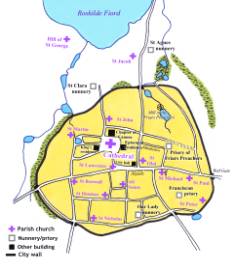 In
fact, such a ‘combined central
and peripheral location’ can be identified for no less than 11 out of the 15
Danish-Dominican priories. Roskilde is a good example of this; the priory site
takes up a good deal of the north-eastern part of the city area, all the way out
to the wall, but from the priory’s entrance there is only a five minutes walk
to the cathedral, the episcopal residence, the canons’ residence and the city
hall. In three cases (Schleswig, Haderslev and Helsingør), the priory was
situated just outside the official city wall close by a gate. In fact, a
location near important city gates and the main streets seem to be the one most
characteristic feature for Dominican priories in medieval Denmark. A
geographical issue, which I have grown especially interested in, is the location
of the church within the whole priory complex. Since most of the Dominican
priories in Denmark are long gone, and in several cases only sparsely excavated
archaeologically, we can only with certainty identify the church location for 10
of the priories: here we find six to the north and four to the south.
Furthermore, the location of the church was in no way coincidental: southern
churches can be found in priories situated in the northern parts of town, vice
versa with northern churches in southern-located priories. The logical
explanation for this seems to be that the friars wanted to situate their church
as close to the most publicly trafficked areas as possible.
In
fact, such a ‘combined central
and peripheral location’ can be identified for no less than 11 out of the 15
Danish-Dominican priories. Roskilde is a good example of this; the priory site
takes up a good deal of the north-eastern part of the city area, all the way out
to the wall, but from the priory’s entrance there is only a five minutes walk
to the cathedral, the episcopal residence, the canons’ residence and the city
hall. In three cases (Schleswig, Haderslev and Helsingør), the priory was
situated just outside the official city wall close by a gate. In fact, a
location near important city gates and the main streets seem to be the one most
characteristic feature for Dominican priories in medieval Denmark. A
geographical issue, which I have grown especially interested in, is the location
of the church within the whole priory complex. Since most of the Dominican
priories in Denmark are long gone, and in several cases only sparsely excavated
archaeologically, we can only with certainty identify the church location for 10
of the priories: here we find six to the north and four to the south.
Furthermore, the location of the church was in no way coincidental: southern
churches can be found in priories situated in the northern parts of town, vice
versa with northern churches in southern-located priories. The logical
explanation for this seems to be that the friars wanted to situate their church
as close to the most publicly trafficked areas as possible.
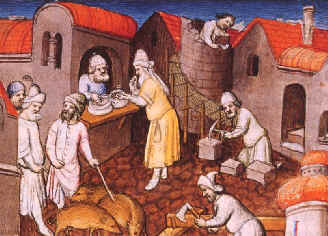 In one of the final
chapters, I focus on Dominican possessions of property outside the priory walls
in medieval Denmark, and how this could effect the convents’ relation to the
rest of society. Going through the Danish material, I have found a total of 79
incidents of Dominican-owned property outside the priory walls. In 41 cases, the
property in question was situated in or just outside the hometown of the priory,
nine incidents are concerned with possessions in other towns, while 24 refer to
some sort of rural estate; the remaining five incidents only use the unspecific
mentioning of “some estate”. In 20 cases of the urban possessions, the
records specifically term the property in question as a ‘farm’ (Lat.: curia;
Da.: gård), which in spite of its rural ring also is the commonly used
term for urban houses in medieval Denmark. All Danish convents, except for three,
are known to have had at least one such farm somewhere in their hometown. My
comparative studies of the conditions in North-Western Europe may point to a
rather interesting observation in this regard. It is in the most urbanized areas
of Flanders and the north German Hansa cities that we find the apparently most
obedient convents in regard of not owning property - probably due to more
restrictive and powerful city magistrates, wishing to keep the urban territory
on lay tax-paying hands. On a smaller scale, something equivalent may be
observed in Denmark, where it generally is in the smaller ‘Dominican towns’
that we find the largest numbers of urban property held by the friars. Most
Dominican-owned urban houses and gardens seem to have brought in an extra income
from renting it out to tenants, and my dissertation gives a number of detailed
examples of this. Especially in Vejle, the Friars Preachers can be seen to have
played a significant role in society as holders and letters of real estate.
While most of the residential possessions appear to have been used for rental
purposes, the friars kept a number of vegetable gardens and meadows in the
vicinity of the priory for their own use. Furthermore, within the priory walls
most convents seem to have had rather large sites, usually around 2 hectares, of
which a significant part was used for gardening. Especially it is worth noting
that almost all Danish priories explicitly are known to have had orchards,
something otherwise not so common in medieval Scandinavian society.
In one of the final
chapters, I focus on Dominican possessions of property outside the priory walls
in medieval Denmark, and how this could effect the convents’ relation to the
rest of society. Going through the Danish material, I have found a total of 79
incidents of Dominican-owned property outside the priory walls. In 41 cases, the
property in question was situated in or just outside the hometown of the priory,
nine incidents are concerned with possessions in other towns, while 24 refer to
some sort of rural estate; the remaining five incidents only use the unspecific
mentioning of “some estate”. In 20 cases of the urban possessions, the
records specifically term the property in question as a ‘farm’ (Lat.: curia;
Da.: gård), which in spite of its rural ring also is the commonly used
term for urban houses in medieval Denmark. All Danish convents, except for three,
are known to have had at least one such farm somewhere in their hometown. My
comparative studies of the conditions in North-Western Europe may point to a
rather interesting observation in this regard. It is in the most urbanized areas
of Flanders and the north German Hansa cities that we find the apparently most
obedient convents in regard of not owning property - probably due to more
restrictive and powerful city magistrates, wishing to keep the urban territory
on lay tax-paying hands. On a smaller scale, something equivalent may be
observed in Denmark, where it generally is in the smaller ‘Dominican towns’
that we find the largest numbers of urban property held by the friars. Most
Dominican-owned urban houses and gardens seem to have brought in an extra income
from renting it out to tenants, and my dissertation gives a number of detailed
examples of this. Especially in Vejle, the Friars Preachers can be seen to have
played a significant role in society as holders and letters of real estate.
While most of the residential possessions appear to have been used for rental
purposes, the friars kept a number of vegetable gardens and meadows in the
vicinity of the priory for their own use. Furthermore, within the priory walls
most convents seem to have had rather large sites, usually around 2 hectares, of
which a significant part was used for gardening. Especially it is worth noting
that almost all Danish priories explicitly are known to have had orchards,
something otherwise not so common in medieval Scandinavian society.
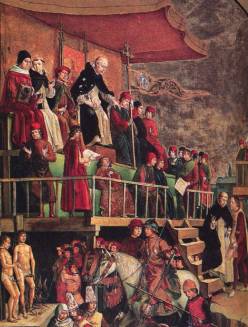 The final thematic
chapter of the dissertation looks into the role of Danish Dominicans as
inquisitors. Especially
the fight against the enemy within, the heretics, have played a significant part
in modern times’ conception of medieval Dominicans. Even in present-day
Denmark, where little acquaintance otherwise can be expected in regard of
medieval friars, the filmed version of Umberto Eco’s novel Name of the Rose
has made it common knowledge that the Dominicans were in charge of the
Inquisition - something which has not exactly improved the friars’ reputation.
As it turns out, a report on ‘Dominican Inquisition’ in medieval Denmark or
even Scandinavia would be extremely thin. Although the Inquisition is known to
have played some role in the north German and Polish areas just south of
Scandinavia, it never really crossed the borders to the province of Dacia, and
the few inquisitorial incidents, we can find in the sources, point more
to the Franciscans, who held the office as ‘papal inquisitors’ in Dacia in
the fifteenth century – although apparently without having to deal with any
known cases. Dominicans from Sigtuna and Visby did, in fact, act in two recorded
cases as inquisitors and witnesses against local, individual heretics, both from
the fourteenth century, but in each case the whole thing was dealt with locally
under the jurisdiction of the local bishops – not as a part of the Papal
Inquisition. Apparently, the main reason for this lack of Dominican inquisitors
in Dacia is that actual heretic movements never reached Scandinavian latitudes,
at least not until the 1520s, and until then, Scandinavian heresy was
characterized by individuals. If heretics had occurred here on a larger scale, especially in the
thirteenth or fourteenth centuries, it is quite likely that local Dominicans would
have been enrolled in the fight against them, as they were in Poland. Actually,
we do know of one Danish Dominican involved in the Inquisition, but this all
took place far abroad, as Fr. Ivar Johansen of the convent of Haderslev in 1474
was assigned to the Italian convent of Padua as novice master, and the following
summer was appointed socius for the inquisitor Jacobus Perez de Valencia
by the master general. Furthermore, by the Reformation, Danish Dominican leaders
naturally took part in the defence of the orthodox Roman-Catholic Church, such
as Provincial Fr. Hans Nielsen, but there is nothing to suggest that any of them
did this as papal inquisitors, only as good Catholic Dominicans. The conclusion
of this inquisitorial quest therefore seems to be that if the classic view among
historians as well as in ‘lay circles’ about Dominican participation in the
medieval Inquisition needs to be re-defined for Europe in general, this is even
more the case in the province of Dacia. Fortunately, for students of Dominican
history in medieval Scandinavia, the Friars Preachers of Dacia were able to find
numerous other interesting and important projects to engage themselves in.
The final thematic
chapter of the dissertation looks into the role of Danish Dominicans as
inquisitors. Especially
the fight against the enemy within, the heretics, have played a significant part
in modern times’ conception of medieval Dominicans. Even in present-day
Denmark, where little acquaintance otherwise can be expected in regard of
medieval friars, the filmed version of Umberto Eco’s novel Name of the Rose
has made it common knowledge that the Dominicans were in charge of the
Inquisition - something which has not exactly improved the friars’ reputation.
As it turns out, a report on ‘Dominican Inquisition’ in medieval Denmark or
even Scandinavia would be extremely thin. Although the Inquisition is known to
have played some role in the north German and Polish areas just south of
Scandinavia, it never really crossed the borders to the province of Dacia, and
the few inquisitorial incidents, we can find in the sources, point more
to the Franciscans, who held the office as ‘papal inquisitors’ in Dacia in
the fifteenth century – although apparently without having to deal with any
known cases. Dominicans from Sigtuna and Visby did, in fact, act in two recorded
cases as inquisitors and witnesses against local, individual heretics, both from
the fourteenth century, but in each case the whole thing was dealt with locally
under the jurisdiction of the local bishops – not as a part of the Papal
Inquisition. Apparently, the main reason for this lack of Dominican inquisitors
in Dacia is that actual heretic movements never reached Scandinavian latitudes,
at least not until the 1520s, and until then, Scandinavian heresy was
characterized by individuals. If heretics had occurred here on a larger scale, especially in the
thirteenth or fourteenth centuries, it is quite likely that local Dominicans would
have been enrolled in the fight against them, as they were in Poland. Actually,
we do know of one Danish Dominican involved in the Inquisition, but this all
took place far abroad, as Fr. Ivar Johansen of the convent of Haderslev in 1474
was assigned to the Italian convent of Padua as novice master, and the following
summer was appointed socius for the inquisitor Jacobus Perez de Valencia
by the master general. Furthermore, by the Reformation, Danish Dominican leaders
naturally took part in the defence of the orthodox Roman-Catholic Church, such
as Provincial Fr. Hans Nielsen, but there is nothing to suggest that any of them
did this as papal inquisitors, only as good Catholic Dominicans. The conclusion
of this inquisitorial quest therefore seems to be that if the classic view among
historians as well as in ‘lay circles’ about Dominican participation in the
medieval Inquisition needs to be re-defined for Europe in general, this is even
more the case in the province of Dacia. Fortunately, for students of Dominican
history in medieval Scandinavia, the Friars Preachers of Dacia were able to find
numerous other interesting and important projects to engage themselves in.
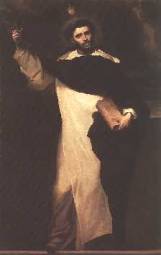 In
the conclusion, I have tried to present the main observations of the nine
thematic chapters by looking at the whole thing from two somewhat different
angles, with the hope of hereby cutting across the thematic lines of the study
in concern of the societal role of the Friars Preachers. The first angle takes
off in the collective interface for different social groups with the Friars
Preachers, seen from the perspective of the members in each group. The other
angle puts focus on possible changes in the societal role of the Friars
Preachers, which my studies indicate might have taken place during the 300 years
with Dominicans in Denmark. And as an overall conclusion, in all of this period,
the friars certainly do seem to have played quite a significant, many-sided and
dynamic role on several levels and for numerous groups of people in medieval
Danish society. With my PhD-dissertation, I hope to have shown this on a number
of chosen societal themes, and, hopefully, hereby contributed to an increased
understanding of and interest in the heterogenous work of Friars Preachers in
high and late medieval Denmark.
In
the conclusion, I have tried to present the main observations of the nine
thematic chapters by looking at the whole thing from two somewhat different
angles, with the hope of hereby cutting across the thematic lines of the study
in concern of the societal role of the Friars Preachers. The first angle takes
off in the collective interface for different social groups with the Friars
Preachers, seen from the perspective of the members in each group. The other
angle puts focus on possible changes in the societal role of the Friars
Preachers, which my studies indicate might have taken place during the 300 years
with Dominicans in Denmark. And as an overall conclusion, in all of this period,
the friars certainly do seem to have played quite a significant, many-sided and
dynamic role on several levels and for numerous groups of people in medieval
Danish society. With my PhD-dissertation, I hope to have shown this on a number
of chosen societal themes, and, hopefully, hereby contributed to an increased
understanding of and interest in the heterogenous work of Friars Preachers in
high and late medieval Denmark.
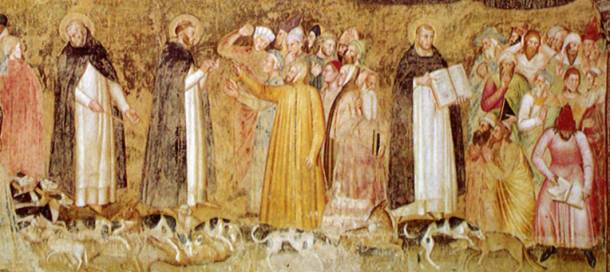
Centre
for Dominican Studies of Dacia
Johnny
G.G. Jakobsen, Department of Scandinavian Research, University of Copenhagen
Postal address: Njalsgade 136, DK-2300 Copenhagen, Denmark ● Email: jggj@hum.ku.dk